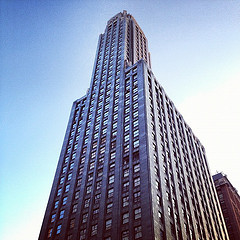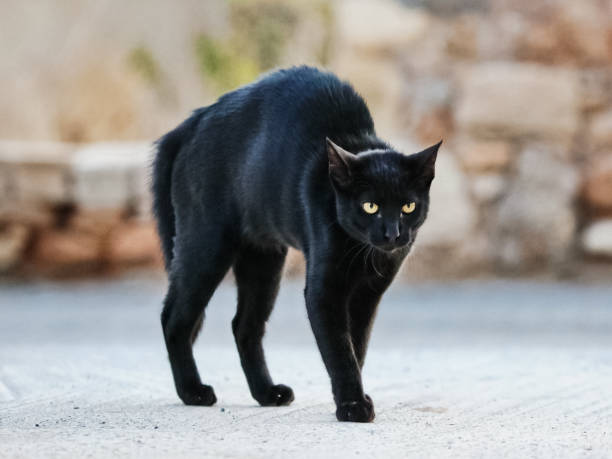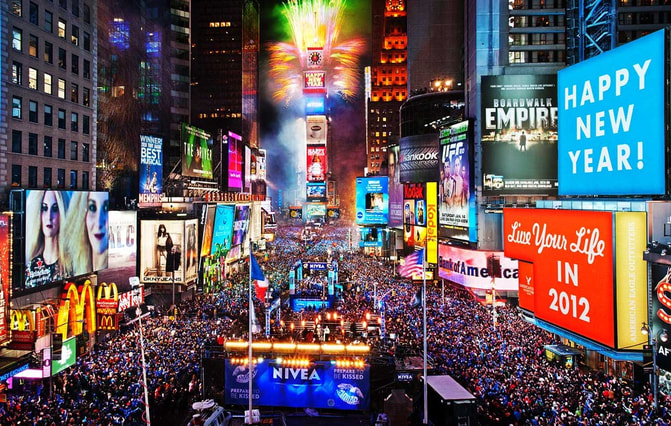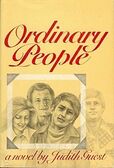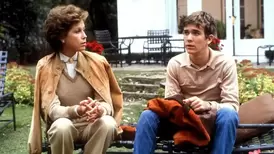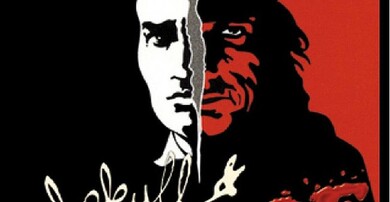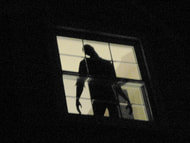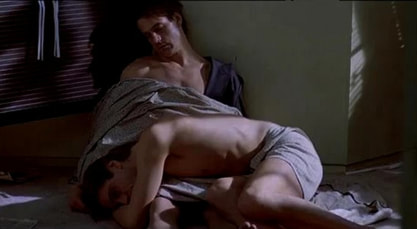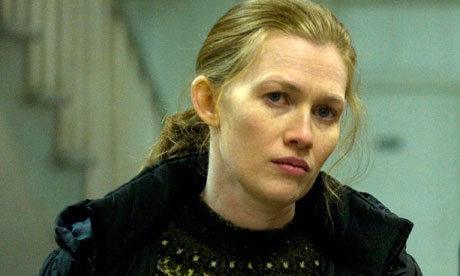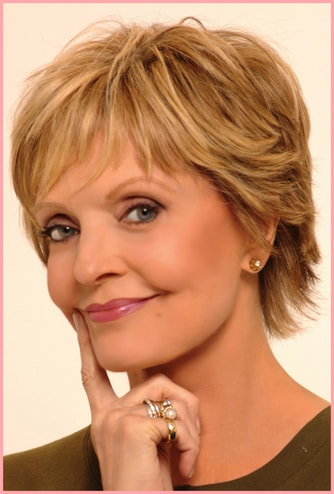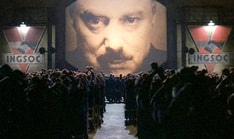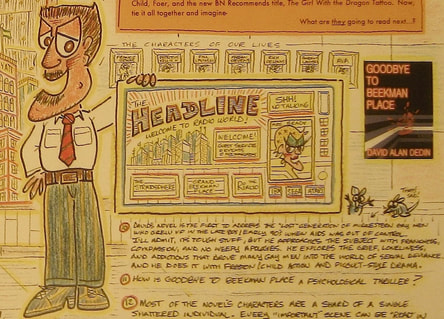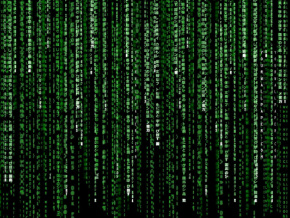Goodbye to Beekman Place
Visual Metaphors
The Beekman Place HotelThe Beekman Place Hotel represents the story, itself. Goodbye to Beekman Place went through many rewrites, and every hotel floor represents another draft – or, another story/floor added to the building.
Per the Beekman Place backstory (and the story of Bill Roanoke), Beekman Place was created for PROHIBITION – a time when drinking was not allowed (a metaphor for an alcoholic’s sobriety). When Beekman Place reopened after Prohibition, it was the start of the GREAT DEPRESSION – a metaphor for the omnipresent narrator's own depression…and impending thoughts of suicide. Beekman Place represents the author’s MEMORY. Each room in the hotel holds a different memory/event. As mentioned in the Author’s Note, each memory is as real as though it happened yesterday. |
The Elevator With
|
Radio World
RADIO WORLD is a metaphor for IMAGINATION – or specifically about hiding in imagination, as a coping technique to survive the real world.
Radio World is constructed in the very center a large underground chamber. The city is surrounded by water, hills, and ultimately a towering wall that acts like a fence in a cage - and prevents people from leaving. In short, the city exists in the middle of a depression.
Radio World’s CEILING represents the inability of the imagination to connect with other people. The ceiling is a metaphor for social isolation and loneliness.
Radio World's CROWDED STREETS represent schizotypal memory and social isolation. Almost everyone in the city is a memory of a real person from the omnipresent narrator's life. With no real friends (in real life), the narrator copes with loneliness by keeping the memories of people from his past "alive."
Radio World is surrounded by a MOAT, further symbolizing the city's isolation.
Radio World looks garish/artificial in sunlight, a metaphor for the fact that the city is ultimately a figment of the omnipresent narrator's imagination.
THE GRAND BEEKMAN PLACE TOWER represents the heart of the city (or more specifically, the heart of the omnipresent narrator's imagination). The Tower can be seen from every street in the city, and the stars from the Tower's rooftop globe signifies Radio World's "heartbeat." The Tower has grown so tall, it's almost touching the ceiling - a metaphor for captivity, or the bondage of being trapped in imagination.
Radio World is constructed in the very center a large underground chamber. The city is surrounded by water, hills, and ultimately a towering wall that acts like a fence in a cage - and prevents people from leaving. In short, the city exists in the middle of a depression.
Radio World’s CEILING represents the inability of the imagination to connect with other people. The ceiling is a metaphor for social isolation and loneliness.
Radio World's CROWDED STREETS represent schizotypal memory and social isolation. Almost everyone in the city is a memory of a real person from the omnipresent narrator's life. With no real friends (in real life), the narrator copes with loneliness by keeping the memories of people from his past "alive."
Radio World is surrounded by a MOAT, further symbolizing the city's isolation.
Radio World looks garish/artificial in sunlight, a metaphor for the fact that the city is ultimately a figment of the omnipresent narrator's imagination.
THE GRAND BEEKMAN PLACE TOWER represents the heart of the city (or more specifically, the heart of the omnipresent narrator's imagination). The Tower can be seen from every street in the city, and the stars from the Tower's rooftop globe signifies Radio World's "heartbeat." The Tower has grown so tall, it's almost touching the ceiling - a metaphor for captivity, or the bondage of being trapped in imagination.
Old Coke
|
"Shh, No Talking!"In a nutshell, it means ANXIETY. More specifically, it means "not knowing what anxiety really is," and this phrase represents the author's fear of speaking his mind, especially with tough subjects like addiction, depression, mental illness and shame. "SHH, NO TALKING is typically mentioned in conjunction with Radio World - particularly with the memories behind the city's guests: "It's law enforcement," Ava said. "Like when you see security guards in buildings."
This phrase can also be seen within the characters' struggle for words. Their hesitation. Their "thinking things out in their head" before sharing dialogue with another character. Anxiety is "normal" to the characters, in the same way that an addict only feels normal when using. |
Frankie Downs
"Frankie" is short for FRANKENSTEIN, a metaphor for the monster of alcoholism.
Frankie is a wrongfully-accused man, the prime suspect in a murder investigation where he appears to be guilty. Frankie's guilt represents the GUILT felt by the author/narrator - especially in regards to alcoholism, sexual deviance, and feeling as though he has failed to reach his own personal potential.
Frankie's OCD represents the need for CONTROL, particularly in how he maintains his outward appearance - and how clean he keeps his car and apartment. By controlling his appearance/surroundings (while his own life is slowly growing out of control), Frankie "hides in plain sight."
Frankie's obsession with his WEIGHT is a metaphor for the weight of living with guilt/shame. Weight gain is also a symptom of anxiety, especially in regards to the possibility of cancer - the disease that killed Paul/Janeane Lavinski's mother, and something that Jim noticed in his final scene with Frankie. Cancer is a metaphor for grief. And in GTBP's epilogue, Frankie's recent weight loss is strongly alluded to cancer - a disease he fears as much as HIV.
Frankie's love of BDSM is a metaphor for both loneliness & control - or, tying down his boy so he can't get away.
Frankie is a wrongfully-accused man, the prime suspect in a murder investigation where he appears to be guilty. Frankie's guilt represents the GUILT felt by the author/narrator - especially in regards to alcoholism, sexual deviance, and feeling as though he has failed to reach his own personal potential.
Frankie's OCD represents the need for CONTROL, particularly in how he maintains his outward appearance - and how clean he keeps his car and apartment. By controlling his appearance/surroundings (while his own life is slowly growing out of control), Frankie "hides in plain sight."
Frankie's obsession with his WEIGHT is a metaphor for the weight of living with guilt/shame. Weight gain is also a symptom of anxiety, especially in regards to the possibility of cancer - the disease that killed Paul/Janeane Lavinski's mother, and something that Jim noticed in his final scene with Frankie. Cancer is a metaphor for grief. And in GTBP's epilogue, Frankie's recent weight loss is strongly alluded to cancer - a disease he fears as much as HIV.
Frankie's love of BDSM is a metaphor for both loneliness & control - or, tying down his boy so he can't get away.
|
Frankie Downs
|
The Skinhead and the Boy
&
the Dynamic Between Frankie, Paul, and Jordan
It's intentionally unclear if the the Skinhead and the Boy are the same person (Jordan), and even now, I really don't have a good answer for that. Clearly, the two boys are "the good and the bad of the same person," like good Kirk from Star Trek and darkest-timeline Abed. Their dynamic is intended to mirror Frankie and Paul.
But whether Skinhead or boy, each person completes another flawed man: Jordan (the boy) completes Paul Lavinski, and the Skinhead (the alleged killer) completes Frankie Downs. WIth Frankie/Paul's dynamic in mind, the Skinhead/boy's metaphor is that of hope: Both Frankie and Paul are lonely. They long to find a boy to love them unconditionally - and to help them overcome their alcoholism.
The relationship of "SIR and boy" is also mirrored in the story's reference to padlocks - as a symbol for a wedding ring. The Skinhead wears a padlock. Paul locks a padlock around Jordan's neck. In Chapter Three, Frankie locks a padlock around Stephen Dorsey's neck, symbolizing a Sir's search for a boy.
Later, in Chapter Five, a witness to Janeane/Taft's car accident mentions that the Skinhead (the cause of the crash) was wearing a padlock, himself - and compares the act to a wedding ring. Also, it should be noted that in Chapter Three, Frankie describes getting publicly drunk in the "Padlock" bar in Phoenix - an experience that nearly ruined his reputation as a quality SIR. In the world of the book, padlocks become a symbol for a symbol for love…and drive Frankie's actions against Paul, later in the story.
But whether Skinhead or boy, each person completes another flawed man: Jordan (the boy) completes Paul Lavinski, and the Skinhead (the alleged killer) completes Frankie Downs. WIth Frankie/Paul's dynamic in mind, the Skinhead/boy's metaphor is that of hope: Both Frankie and Paul are lonely. They long to find a boy to love them unconditionally - and to help them overcome their alcoholism.
The relationship of "SIR and boy" is also mirrored in the story's reference to padlocks - as a symbol for a wedding ring. The Skinhead wears a padlock. Paul locks a padlock around Jordan's neck. In Chapter Three, Frankie locks a padlock around Stephen Dorsey's neck, symbolizing a Sir's search for a boy.
Later, in Chapter Five, a witness to Janeane/Taft's car accident mentions that the Skinhead (the cause of the crash) was wearing a padlock, himself - and compares the act to a wedding ring. Also, it should be noted that in Chapter Three, Frankie describes getting publicly drunk in the "Padlock" bar in Phoenix - an experience that nearly ruined his reputation as a quality SIR. In the world of the book, padlocks become a symbol for a symbol for love…and drive Frankie's actions against Paul, later in the story.
Jim Brennard & Libby Kaslauskas ...
|
Jim and Libby represent the best case scenerio of growing old. The fact that they're male & female is irrelevant; what's important is that their both alone. Jim is a dirty old man who dresses too young for his age, takes care of himself as best as he can, and struggles to maintain his young man's libido. Libby on the other hand has accepted her age - not with dignity, but with fun. Libby still loves her nightlife like a youth, but she also knows that she flirts with men half her age, her 80-year-old body attracts more laughter than sexual excitement. Jim & Libby: old age from two different perspectives. They both seem happy on the surface, but each is too proud to admit loneliness. |
… and Jeeves & Mrs. Lovett
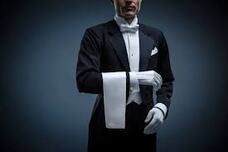
Jeeves and Mrs. Lovett mirrors the metaphor to Jim and Libby, only their roles reflect function, rather than empathy. Their actions - like their attire - are very black and white…and at risk of sounding like a caveman, "Jeeves good, Mrs. Lovett bad." Whenever Jeeves appears in the story, he's pleasant, attentive, and adaptive to situations. Lovett on the other hand, is curt, rigid, and completely void of emotion. In the larger sense, their roles reflect the father-and-son dynamic between Bill Roanoke and Mrs. Brady. It's a dynamic that rarely ends happy.
Detective Kellie HoganDetective Kellie Hogan is a metaphor for JOY. Her middle name is "Joyce" - short for "Joy" - and by joining the investigation, she represents the arrival of the potential for happiness within the narrator's life. Her fall from the Tower (as Ava literally throws her out of the story) represents the narrator's ultimate inability of allowing joy into his life.
Kellie's pregnancy at the story's end is a metaphor for the boy's (Jordan's) escape from the story. The "+" response on her pregnancy test also mirrors Frankie's fear of possibly being HIV+. But on the flip side, the fact that Kellie is carrying a baby "boy" represents a "break in the author's cloud of depression"…and the fact that maybe, his boy/partner may still be out there. |
Detective Janeane Lavinski"Janeane Lavinski" is intentionally modeled after "Janeane Garafalo." Lavinski represents Garafalo's tough exterior in movies, especially Garafalo's ambiguous sexuality. Like Garafalo's many roles, Janeane Lavinski behaves as a tough, no-nonsense, and highly-opinionated woman. But Janeane Lavinski hides personal secrets - not only that she's gay, but that she carries the same shame & guilt (over being gay) that Frankie carries, himself.
|
Mrs. Brady:
The Face of THE HEADLINE
Mrs. Brady represents the quintessential mother figure.
Her presence in Radio World's HEADLINE is a metaphor for an overprotective parent - in particular, a mother who won't accept that her son is gay. In Radio World (in Paul/Frankie's imagination), Mrs. Brady is everywhere…on billboards, car-phones, personal computers, or as a direct participant in a scene. She is always watching - and the story's characters are aware of her, like CCTV. Detective Kellie Hogan & Ava must take incredible precautions to avoid having their actions known. But of course, Mrs. Brady sees them…and that leads to unfortunate consequences.
Mrs. Brady is a metaphor for the SHH, NO TALKING shame that governs Radio World. It's the shame of being gay, the shame of being involved in S&M, and the shame of being a disappointment - as a parent's son, a success in life…and as a Mother's baby boy. Like Norman Bates' mother in Bates Motel, Mrs. Brady is involved in all aspects of Radio World (or, all aspects of her son's personal life) - a parent who refuses to let go of control because she fears that her son's decisions will lead to homosexuality, just like her husband, Robert Reed. And imagining that her son participates in the gay leather scene is totally unthinkable…which leads to attempted-intervention, fueled by guilt and shame. But unbeknownst to Brady, that intervention strengthens her son's thoughts of suicide.
In the final scenes of Goodbye to Beekman Place, Mrs. Brady's actions lead to horrific consequences.
No matter how much guilt a parent instills into their child, the child wants nothing more than acceptance from their parent.
But forgiveness isn't always easy…
In Goodbye to Beekman Place, ALL mothers are bad…and meet horrible ends:
The ultimate result is to represent the author's/narrators' loneliness…and the suicidal thoughts that remain, despite the story's end.
Her presence in Radio World's HEADLINE is a metaphor for an overprotective parent - in particular, a mother who won't accept that her son is gay. In Radio World (in Paul/Frankie's imagination), Mrs. Brady is everywhere…on billboards, car-phones, personal computers, or as a direct participant in a scene. She is always watching - and the story's characters are aware of her, like CCTV. Detective Kellie Hogan & Ava must take incredible precautions to avoid having their actions known. But of course, Mrs. Brady sees them…and that leads to unfortunate consequences.
Mrs. Brady is a metaphor for the SHH, NO TALKING shame that governs Radio World. It's the shame of being gay, the shame of being involved in S&M, and the shame of being a disappointment - as a parent's son, a success in life…and as a Mother's baby boy. Like Norman Bates' mother in Bates Motel, Mrs. Brady is involved in all aspects of Radio World (or, all aspects of her son's personal life) - a parent who refuses to let go of control because she fears that her son's decisions will lead to homosexuality, just like her husband, Robert Reed. And imagining that her son participates in the gay leather scene is totally unthinkable…which leads to attempted-intervention, fueled by guilt and shame. But unbeknownst to Brady, that intervention strengthens her son's thoughts of suicide.
In the final scenes of Goodbye to Beekman Place, Mrs. Brady's actions lead to horrific consequences.
No matter how much guilt a parent instills into their child, the child wants nothing more than acceptance from their parent.
But forgiveness isn't always easy…
In Goodbye to Beekman Place, ALL mothers are bad…and meet horrible ends:
- Patricia Lavinski dies of cancer.
- Tina Collins is alienated (and rejected) by her staff.
- Mrs. Brady is thrown off the Beekman Place Tower by Frankie.
- Detective Kellie Hogan is - literally - thrown out of the story at the end.
- Janeane Lavinski - Paul's sister, and possibly Frankie's sister - and the only connection to his family - is left alone, to face her brother's death.
The ultimate result is to represent the author's/narrators' loneliness…and the suicidal thoughts that remain, despite the story's end.
Visual Images That I'm REALLY Proud Of:
Please allow me a moment to toot my own horn ...
- The Matrix raindrops on the window in Chapter Three.
- The clouds that resembled crumpled wax paper in Chapter One.
- "Headline News" playing on the Peoria Beekman Place TV.
- The Doritos that fell from Detective Willie Taft's lap, in Chapter Five
- The Brady Bunch foreshadowing on Frankie's apartment TV.
- The lights of Chicago reflected on the hood of Frankie's Eldorado.
- The shapes of faces witin the shower steam.
- Ella - all of it.
- Libby's smoking-smokescreen.
- Detective Kellie Hogan, "as perfect as a Nagel print."
- RADIO WORLD in sunlight: garish, plastic, and fake.
- Liberace, Michael Jackson, and Macaulay Culkin at the piano.
- Mrs. Brady's recorded message when the elevator crashes.
- The RADIO WORLD letters, falling one-by-one from the Tower.
- The Beekman Place Hotel and Stephen King's "Overlook Hotel" from The Shining.
Libby singing "No TIme at All" from Pippin.
By the way,
why the hell is the book so fuckin' LONG?
... Because I grew up reading THIS GUY !
And when I began writing my own book, I tried to mirror my all-time favorite author.
And when I began writing my own book, I tried to mirror my all-time favorite author.
* The Joy of Creativity, posted 9/7/2023:
From "Goodbye to Beekman Place" :
I knew Chris for only one month. We were friends mostly, but I definitely wanted more. To be perfectly honest, that whole time is still a blur; I remember little flashes…old house, caged dogs in the kitchen, a pair of lava lights, a leather jacket on the back of a chair, but when it comes to Chris himself, the only reason I even know what he looked like is because I drew him two cartoons during that time, the second one better than the first. Far better, in fact-
And I also started writing a book.
I knew Chris for only one month. We were friends mostly, but I definitely wanted more. To be perfectly honest, that whole time is still a blur; I remember little flashes…old house, caged dogs in the kitchen, a pair of lava lights, a leather jacket on the back of a chair, but when it comes to Chris himself, the only reason I even know what he looked like is because I drew him two cartoons during that time, the second one better than the first. Far better, in fact-
And I also started writing a book.

